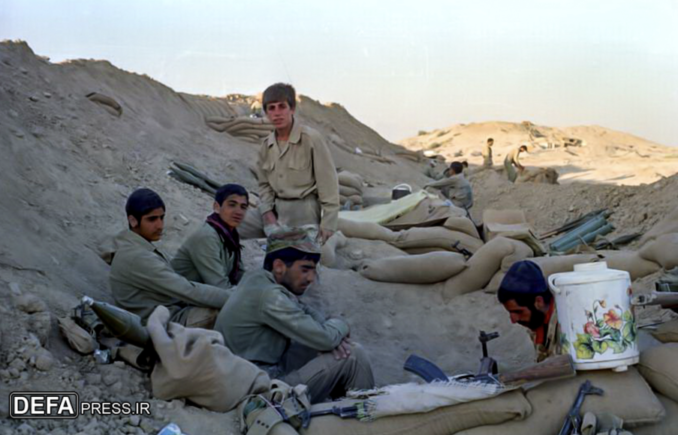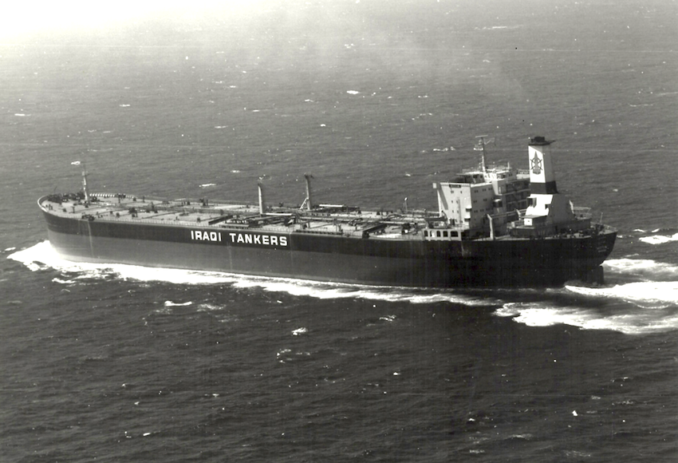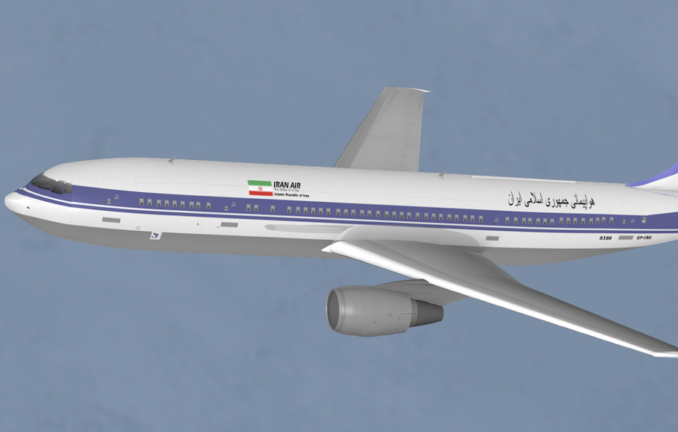As Mrs AWS and I flash through the Scottish Lowlands after our day trip to Edinburgh, passing through Lockerbie station reminds us of events decades ago and thousands of miles away. Nowadays the term ‘Gulf War’ points towards Saddam Hussein’s invasion of Iraq in 1990 (more of which later) and a second attempt to remove Saddam in 2003. However, Puffins of a certain age will recall an earlier Gulf War now referred to as the Iran-Iraq War.
Iran-Iraq War
The Iran-Iraq War, lasting from September 22, 1980, to August 20, 1988, was a prolonged and devastating conflict between Iran and Iraq. The war began when Iraqi President Saddam Hussein, seeking to capitalise on the turmoil in Iran following the 1979 Islamic Revolution, launched an invasion of Iran. The primary motivations for the invasion included territorial disputes over the Shatt al-Arab waterway, Iraq’s desire to assert dominance in the Persian Gulf, and fears of the spread of Iran’s revolutionary ideology.

Between 1980 and 1988,
Unknown photographer via Defa Press Iran – Public domain
The initial stages of the war saw rapid advances by Iraqi forces into Iranian territory. However, these gains were soon reversed as Iran mobilised its population for a “holy defence,” transforming the conflict into a gruelling war of attrition. Both sides engaged in trench warfare reminiscent of World War I, with significant casualties but little territorial change.
The war was marked by the extensive use of chemical weapons, in main by Iraq, and widespread attacks on civilian populations. Both countries targeted each other’s cities and economic infrastructure, causing immense suffering and disruption. Iran’s strategy focused on human wave attacks, relying on the sheer number of its volunteers, including the Basij militia, to overwhelm Iraqi defences.
In contrast, Iraq employed more sophisticated military technology and received substantial support from various Arab states, the Soviet Union, and Western countries, including the United States and Britain, and despite an arms embargo. British military aid included training Iraqi helicopter pilots at an underused, out-of-the-way airfield in the north of England – later utilised by Pan Am and the NSC following the Lockerbie bombing.
The conflict also had a significant impact on the global oil market, leading to fluctuations in oil prices and contributing to economic instability worldwide. Despite numerous peace initiatives and ceasefire attempts, the war dragged on for eight years, causing an estimated one million casualties and substantial economic losses on both sides.
Tanker wars
The Tanker War, a significant phase of the Iran-Iraq War, involved both nations targeting each other’s oil tankers and merchant ships in the Persian Gulf, aiming to disrupt their adversary’s economic lifelines. This phase began in 1984 when Iraq attacked Iranian tankers and oil terminals to weaken Iran’s economy and cut off its oil exports. In response, Iran targeted Kuwaiti and Saudi tankers supporting Iraq, escalating the conflict into a broader regional crisis.
The attacks led to substantial international concern due to the Gulf’s critical role in global oil supply. Both Iran and Iraq deployed naval and air forces to strike at the tankers, utilising missiles, mines, and speedboats. The relentless assaults on commercial shipping prompted several nations, including the United States and Britain, to intervene. The U.S. initiated Operation Earnest Will, reflagging Kuwaiti tankers with the American flag and providing naval escorts to ensure safe passage through the Gulf.

Iraqi Tanker Empty,
Ibrahimuo – Licence CC BY-SA 4.0
The Tanker War resulted in significant economic losses, environmental damage from oil spills, and increased insurance premiums for shipping in the region. It also heightened global oil prices and underscored the vulnerability of critical maritime routes to geopolitical conflicts. It also resulted in an air disaster which, following the Lockerbie bombing of December 1988, pointed suspicion for the destruction of Pan Am Flight 103 over the Dumfrieshire town towards Iran as well as Syria.
Iran Air Flight 655
On July 3, 1988, Iran Air Flight 655, an Airbus A300, was shot down by the USS Vincennes, a guided missile cruiser of the United States Navy, over the Persian Gulf. The incident resulted in the death of all 290 passengers and crew members aboard the aircraft. This tragic event occurred during the latter stages of the Iran-Iraq War.
The USS Vincennes was part of a U.S. naval task force patrolling the Strait of Hormuz, a critical chokepoint for global oil shipments. On the day of the incident, the Vincennes became engaged in a skirmish with Iranian gunboats, which reportedly prompted a heightened state of alert among the crew. In this high-pressure environment, the radar operators on the Vincennes detected an aircraft taking off from Bandar Abbas, a dual-use civil and military airport in Iran.
Believing the ascending aircraft to be an Iranian F-14 Tomcat fighter jet, the crew of the Vincennes issued multiple radio warnings, which went unanswered. The crew misinterpreted the aircraft’s flight profile and behaviour, mistaking it for an attacking military aircraft. At 10:24 a.m. local time, with the belief that the plane posed a direct threat, Captain William C. Rogers III ordered the launch of two SM-2MR surface-to-air missiles. Both missiles struck Iran Air Flight 655, causing the aircraft to break apart in mid-air and crash into the sea, killing 290 passengers and crew.
The immediate aftermath of the incident saw conflicting accounts and significant controversy. At first, the U.S. government maintained the Vincennes acted in self-defence, claiming the crew had reasonable grounds to believe they were under attack. However, subsequent investigations and analyses revealed several critical errors in the Vincennes’ identification process.
These included the failure to identify the aircraft’s transponder signals and the misinterpretation of the plane’s flight path. This was consistent with a commercial airliner on a scheduled route rather than a military jet on an attack trajectory.
International reaction to the downing of Iran Air Flight 655 was swift and severe. Iran condemned the action as a barbaric and inhumane attack, calling for accountability and reparations. The U.S. expressed regret over the loss of life but stopped short of issuing a formal apology, attributing the incident to a series of mistakes rather than intentional aggression. The event strained U.S.-Iran relations, which were already fraught due to geopolitical tensions and the ongoing Iran-Iraq War.

Iran Air Flight 655,
Anynobody – Licence CC BY-SA 2.0
In 1996, the United States and Iran reached a settlement at the International Court of Justice. The U.S. agreed to pay $61.8 million in compensation to the families of the victims but continued to deny legal liability or responsibility for the incident. This settlement was part of a larger effort to resolve the legal disputes arising from the tragedy.
A conclusion to the war
The Iran-Iraq War ended on August 20, 1988, following the acceptance of United Nations Security Council Resolution 598 by both Iran and Iraq. This resolution, passed in 1987, called for an immediate ceasefire, withdrawal of troops to international borders, exchange of prisoners of war, and a process to address the responsibility for the conflict and war damages.
The prolonged and costly nature of the war, which caused significant casualties and economic devastation for both countries, eventually pressured them into seeking a resolution. Iraq, the original aggressor, found its military and economic resources depleted, not least after Iran regained territory lost in the early stages of the conflict. Iran, despite its ideological commitment to continue the fight, faced growing internal dissent and economic hardship, exacerbated by a sustained “war of attrition” strategy.
On July 18, 1988, Iranian President Ali Khamenei announced Iran’s acceptance of the UN resolution. This decision was influenced by several factors, including military setbacks, the downing of Iran Air Flight 655 by the USS Vincennes, and the realisation that continuing the war would further devastate the country without likely achieving a decisive victory.
Iraq, likewise, accepted the resolution with a ceasefire being implemented on August 20, 1988. The war ended with both sides claiming victory, although neither achieved their primary objectives. The conflict left deep scars, with massive human and economic costs, shaping the political and social landscapes of both nations for years to come. The ceasefire paved the way for formal peace talks, though a comprehensive peace treaty was never signed. Instead, the ceasefire held.
Sixteen months later, the catastrophe over Lockerbie pointed suspicion towards both Lybia and Syria, with Transport Secretary Paul Channon assuring an off-the-record briefing of journalists the following March that arrests were imminent. However, the geopolitical tectonic plates were shifting once again, with events 3,000 miles distant at the top end of the Persian Gulf about to intervene in the investigation.
To be continued…
© Always Worth Saying 2024



